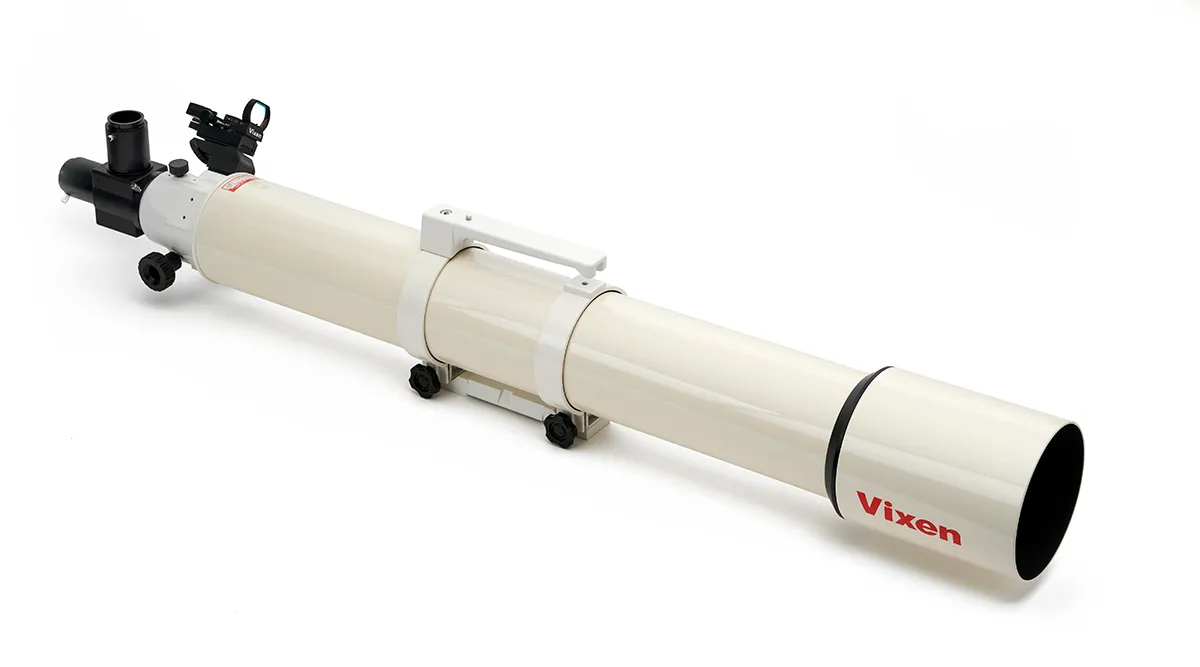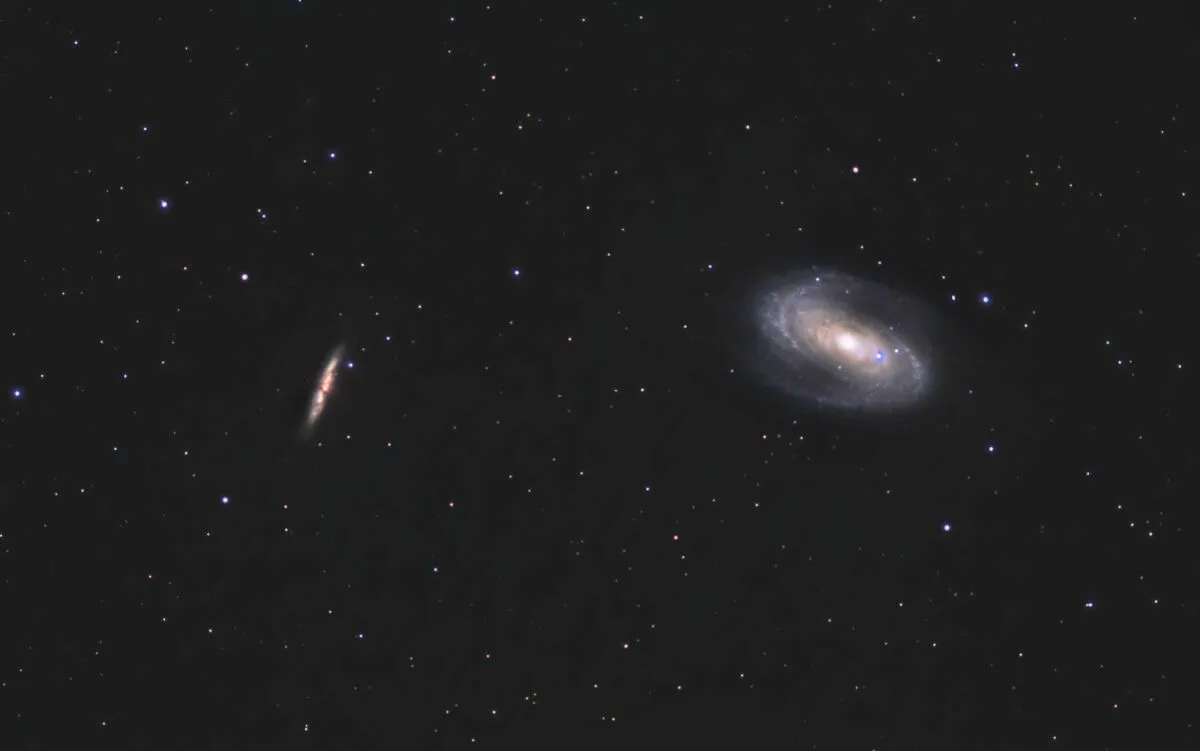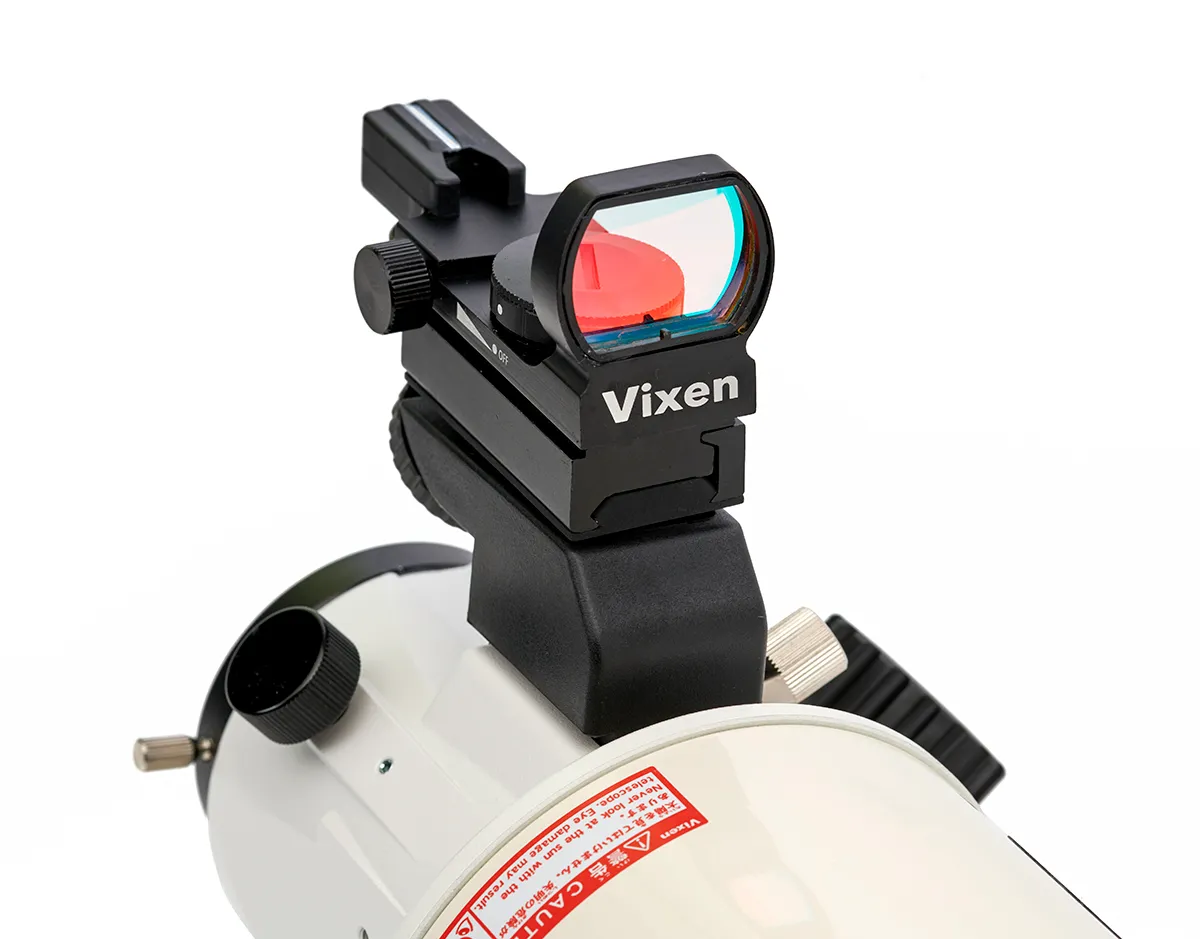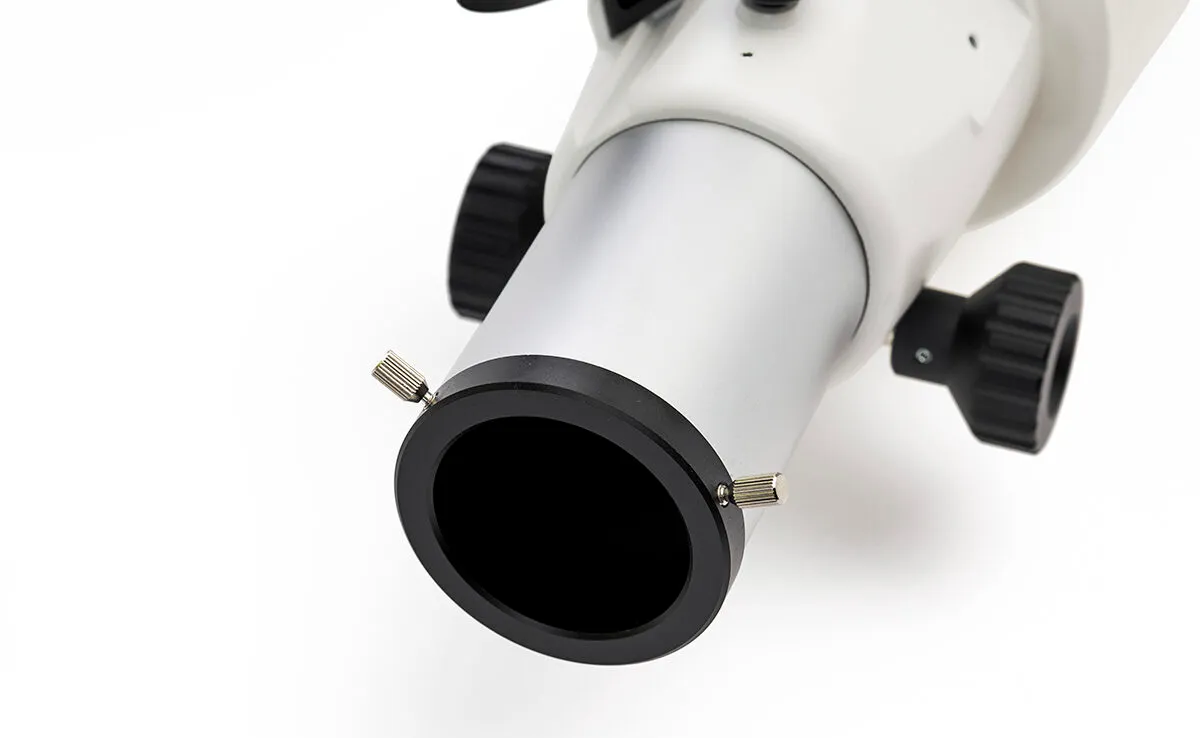As soon as we unpacked the Vixen A105MII achromatic refractor, we noticed its impressive build quality – there’s not a piece of plastic in sight.
It was also pleasing to discover that the optical tube comes with some robust accessories, including a handy, metal flip mirror diagonal – a unique addition and one that allowed us to switch from visual to imaging targets with ease.
Feeling eager to put this 105mm refractor through its paces, we headed outside.

Attaching the telescope to our Sky-Watcher EQ6-R mount was an issue at first.
In its default configuration, the tube ring tension-adjusters prevented us from securing the dovetail in the mount saddle.
But we remedied this by removing the carry handle and mounting the dovetail bar in its place.
Once that was done, the A105MII was easy to balance, and by loosening the tube rings we were able to slide the telescope into the perfect position.
We began with a thorough star test by popping both a 25mm and 15mm eyepiece in and aiming the A105MII at Betelgeuse.
The stars in the field of view were pin sharp with no signs of coma or field curvature; even at the edge of the field of view the stars remained impressively round.

While hopping between Alnitak (Zeta (ζ) Orionis) and Aldebaran (Alpha (α) Tauri), however, we did note considerable colour fringing (chromatic aberration) on these bright stars, but that’s to be expected as this is an achromat telescope.
Turning from those stars to a well-illuminated, 60 per cent-lit gibbous Moon, we saw some beautiful crater detail, and while some slight chromatic aberration persisted around the craters and the Moon’s edge, we enjoyed the views.
Curious to try the achromat’s 4-inch (25mm) glass on fainter objects, we slewed to the Orion Nebula, M42.
The reasonable aperture did not disappoint, and let us see an appreciable amount of bright nebulosity.
Through the 15mm eyepiece we could also resolve the four Trapezium stars.
For visual purposes, we found the focus of the A105MII was very easy to control.
Trying a galaxy or two for size, we headed over to Bode’s Galaxy and the Cigar Galaxy.
We were impressed to see that M82’s distinctive shape was fairly easy to pick out and discern.
Astrophotography with the Vixen A105MII

Pleased with the views, next we were interested to see how the A105MII performed as an imaging telescope, even though it’s aimed more at visual observation.
At f/9.5 and a doublet, the A105MII falls outside the usual specifications for an astrograph.
However, thanks to the flip mirror diagonal, we already had our DSLR attached and were able to switch to the camera instantly.
One thing we noted was that while using a full-frame camera, care was needed to ensure the flip mirror did not appear in the field of view of the image itself.
This issue was resolved, however, by rotating the camera slightly, so that the mirror of the diagonal was positioned on the top of the image.

As we were already set up to capture the M81 and M82 pair of galaxies, we left the camera and telescope running for a couple of hours.
A decent image of the galaxies was captured with a fair amount of detail, but we found that processing the data had its challenges.
Being an achromat, it became obvious during image-editing that the colour channels were not all focused to the same extent.
The blue channel was much more out of focus than the red and green channels.
While we were pleased with our results, anyone new to astrophotography might find processing the images is tricky at first.

Overall, our time with the Vixen A105MII achromatic refractor was rewarding; it coped well with many of the visual targets and, despite its design being more appropriate for visual observing, it also took a reasonable astrophoto.
Given its size and weight, the A105MII might not be a natural choice for beginners, because of the hefty mount that’s required for the setup, but it is easy to use.
For the intermediate astronomer, the A105MII optics perform well, returning crisp and well-contrasted views that you’ll want to admire again and again.
Vixen A105MII’s focal length

The A105MII’s 1,000mm focal length makes it ideal for viewing a variety of astronomical objects, including the Moon and planets, plus a wide range of deep-sky objects such as planetary nebulae, galaxies and star clusters.
It also allows the use of lower powered eyepieces for improved ‘eye relief’ – the distance your eye must be from the eyepiece to see the entire field of view – to ensure a better observing experience, as well as helping astronomers who wear glasses.
The 105mm aperture provides a proficient level of light-gathering capability to enhance the viewing of faint and fuzzy objects, without the scope becoming difficult to manoeuvre.
Generally, refractors are simple enough for beginners to use confidently, as they don’t require collimation or a complicated setup routine.
They also tend to offer the most natural and satisfying viewing experience, with good background contrast and sharp stars, allowing users to explore open clusters and other stellar phenomena.
VixenA105MII achromatic refractor: 5 best features
Red dot finder
The build quality of the A105MII’s red dot finder exceeds expectations. It is robust and comes with fine adjustment knobs to ensure accurate alignment to the telescope once fitted. The brightness of the red dot can also be altered, allowing it to be adapted to our specific visual requirements.
Built-in dew shield
The dew shield extends beyond the primary optics by 170mm. It proved efficient at keeping moisture from interrupting the optical quality during both observing and imaging sessions. We found that the lens was kept dew-free after more than an hour outdoors on several occasions, despite some damp winter nights approaching 100 per cent humidity.
Tube rings
The Vixen A105MII comes fitted with two tube rings, a Vixen-style dovetail bar and a handy carry handle. The rings make it easy to adjust the balance of the optical tube when you’re fitting it to a mount. Each component can be dismantled, allowing a longer dovetail to be installed to the tube rings, if required.
Flip mirror diagonal
The impressive flip mirror diagonal boasts attachments for both an eyepiece and camera T-ring. Indeed, this accessory allowed us to switch easily from visual to imaging sessions once attached. We could therefore take advantage of imaging opportunities without nudging our setup to change from an eyepiece to a DSLR camera.
Rack and pinion single-speed focuser
Using a gear system to securely control the focus, the single-speed focuser is ideal for visual observers to use. The focus tensioner on the underside of the optical tube provides a simple and effective way to ensure that the Vixen A105MII stays in pin-sharp focus, regardless of the eyepiece or camera attached to it.
Vital stats
- Price: £838
- Optics: Achromatic refractor
- Aperture: 105mm
- Focal length: 1,000mm, f/9.5
- Dimensions: 1,010mm x 115mm
- Focuser: Single-speed rack and pinion
- Extras: Vixen XY Red Dot Finder II, tube rings with dovetail bar and carry handle, flip mirror diagonal
- Weight: 4.8kg (including the dovetail bar)
- Supplier: Telescope House
- Tel: 01342 837098
- www.telescopehouse.com
This review originally appeared in the April 2022 issue of BBC Sky at Night Magazine.
